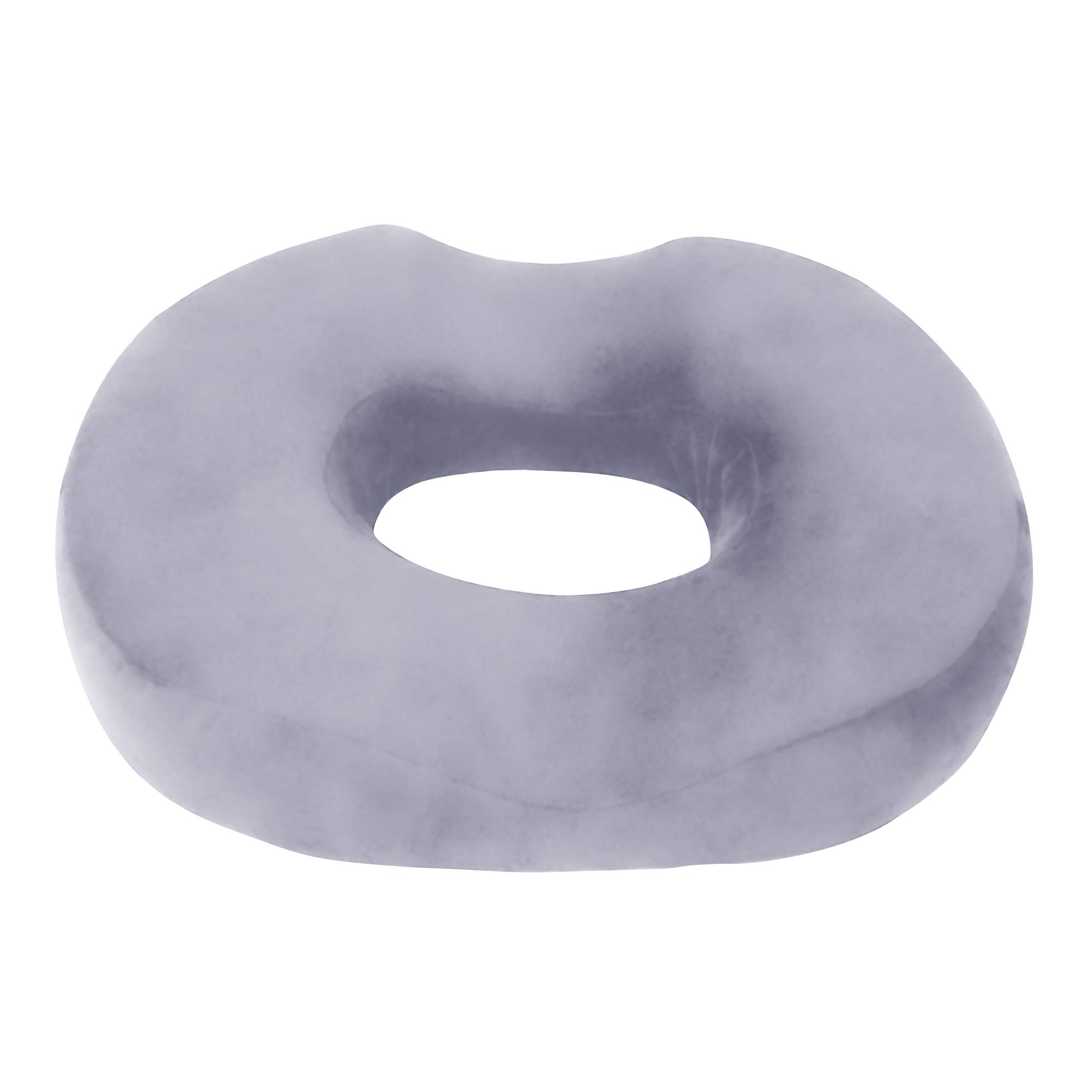

Articles
Why Do Donut Pillows Help Hemorrhoids
Modified: January 19, 2024
Learn how donut pillows can provide relief for hemorrhoids in this informative article. Explore the benefits and find out why they are recommended for hemorrhoid sufferers.
(Many of the links in this article redirect to a specific reviewed product. Your purchase of these products through affiliate links helps to generate commission for Storables.com, at no extra cost. Learn more)
Introduction
Hemorrhoids, also known as piles, can cause discomfort and pain for many individuals. These swollen blood vessels in the rectal area can result from various factors, such as straining during bowel movements, pregnancy, or chronic constipation. While traditional treatments like creams, wipes, and medications can provide relief, some individuals may seek alternative solutions to alleviate their symptoms.
One such alternative is the use of donut pillows. You may have heard of these before, as they are commonly recommended for individuals with conditions that cause discomfort when sitting for extended periods, such as hemorrhoids. Donut pillows are uniquely shaped cushions that have a central opening resembling a donut, hence their name. They are designed to provide support and relief to the affected area by taking pressure off the hemorrhoids when sitting.
In this article, we will delve into the benefits of using donut pillows for hemorrhoids, how they work, tips for choosing the right pillow, and potential side effects. So, if you are seeking a solution to the discomfort caused by hemorrhoids, keep reading to find out if donut pillows could be the answer you’ve been looking for.
Key Takeaways:
- Donut pillows provide relief for hemorrhoid discomfort by reducing pressure, improving circulation, and promoting proper sitting posture. They are a practical and portable solution for managing symptoms.
- While donut pillows can alleviate hemorrhoid discomfort, it’s important to use them judiciously and monitor for potential side effects. Combining their usage with other measures is key to comprehensive hemorrhoid management.
Read more: Why Do People Hug Pillows
Understanding Hemorrhoids
Hemorrhoids are swollen blood vessels located in the rectum or anus. They can occur internally, within the rectal area, or externally, around the opening of the anus. These swollen blood vessels can be caused by various factors, including straining during bowel movements, chronic constipation, pregnancy, obesity, and a sedentary lifestyle.
When the blood vessels become swollen, they can cause symptoms such as itching, pain, and discomfort. In some cases, they may even bleed during bowel movements. Hemorrhoids can range in severity from mild to severe, with more severe cases potentially requiring medical intervention.
There are two primary types of hemorrhoids:
- Internal hemorrhoids: These occur inside the rectum and are generally painless. They may cause bleeding during bowel movements and can sometimes protrude outside the anus.
- External hemorrhoids: These occur outside the anus and can be felt or seen as swollen lumps. They may cause pain, itching, and discomfort.
It’s important to consult with a healthcare professional for an accurate diagnosis of hemorrhoids. They can assess the severity of your condition and provide appropriate treatment options.
Causes of Hemorrhoids
Hemorrhoids can develop due to various factors. Understanding the causes can help you take preventive measures and make informed decisions about managing the condition. Here are some common causes:
- Straining during bowel movements: When you strain excessively while passing stool, it can put pressure on the veins in the rectum and anus, causing them to become inflamed and swollen.
- Chronic constipation: If you frequently experience difficulty in emptying your bowels or have infrequent bowel movements, it can increase the risk of developing hemorrhoids. Straining during constipation further aggravates the condition.
- Pregnancy: Hormonal changes and increased pressure on the veins in the pelvic area during pregnancy can contribute to the development of hemorrhoids. They often improve after childbirth, but can persist if not properly managed.
- Obesity: Excess weight can put strain on the rectal veins, leading to the development of hemorrhoids.
- Sedentary lifestyle: Sitting for long periods, especially on hard surfaces, can put pressure on the rectal area and contribute to the development of hemorrhoids.
- Anal intercourse: Engaging in anal intercourse, particularly without proper lubrication and relaxation of the muscles, can cause trauma to the anal area and increase the risk of hemorrhoids.
- Genetic predisposition: Some individuals may have a genetic predisposition to developing hemorrhoids, making them more susceptible to the condition.
It is important to note that while these factors may contribute to the development of hemorrhoids, they may not be the direct cause in all cases. Each individual’s situation can vary, and it is recommended to consult with a healthcare professional for a proper diagnosis and personalized treatment plan.
Symptoms of Hemorrhoids
Hemorrhoids can cause a range of symptoms that can vary depending on the severity of the condition. Here are some common symptoms associated with hemorrhoids:
- Itching: One of the most common symptoms of hemorrhoids is an intense itching sensation in the anal area. This itching can be irritating and persistent.
- Pain and discomfort: Hemorrhoids can cause pain and discomfort, especially during bowel movements or when sitting for extended periods. The pain can range from mild to severe.
- Bleeding: Bright red blood may be seen on toilet paper or in the toilet bowl after a bowel movement. This bleeding is generally not excessive and is caused by the rupture of small blood vessels in the hemorrhoid.
- Swelling and protrusion: External hemorrhoids can cause swelling and a lump-like protrusion around the anal area. This can make sitting and moving uncomfortable.
- Discomfort during bowel movements: Hemorrhoids can make bowel movements painful and uncomfortable due to the swelling and inflammation of the blood vessels.
- Mucus discharge: Some individuals with hemorrhoids may experience a mucus discharge after bowel movements. This is a result of the irritation and inflammation in the rectal area.
It’s important to note that some of these symptoms can also be indicative of other underlying conditions. If you are experiencing any of these symptoms, it is advisable to consult with a healthcare professional for an accurate diagnosis and appropriate treatment.
Traditional Treatments for Hemorrhoids
When it comes to managing hemorrhoids, there are several traditional treatment options available that can help alleviate symptoms and promote healing. It’s important to note that these treatments may vary depending on the severity of the condition and the individual’s overall health. Here are some commonly used traditional treatments for hemorrhoids:
- Over-the-counter creams and ointments: Topical creams and ointments containing ingredients like hydrocortisone or witch hazel can provide temporary relief from itching, pain, and inflammation. These products are easily accessible and can be purchased without a prescription.
- Sitz baths: A sitz bath involves soaking the anal area in warm water for about 15 minutes multiple times a day. This can help reduce inflammation, promote hygiene, and provide temporary relief from discomfort. Adding Epsom salts or a sitz bath solution to the water can enhance the healing properties.
- Fiber supplements: Consuming a high-fiber diet or taking fiber supplements can help soften the stool and ease bowel movements. This can reduce the strain on the hemorrhoids and prevent further irritation.
- Stool softeners: Stool softeners are medications that can be taken orally to help soften the stool and make bowel movements more comfortable. They are particularly useful for individuals with chronic constipation.
- Witch hazel pads: Witch hazel pads, also known as medicated wipes, can be used to clean the anal area after bowel movements. Witch hazel has natural anti-inflammatory properties and can provide relief from itching and irritation.
- Prescription medications: In some cases, healthcare professionals may prescribe stronger medications, such as corticosteroids or topical analgesics, to provide more significant relief from pain and inflammation.
- Minimally invasive procedures: For more severe cases of hemorrhoids that do not respond to conservative treatments, procedures such as rubber band ligation, sclerotherapy, or infrared coagulation may be recommended. These procedures help shrink the hemorrhoids and reduce symptoms.
It is crucial to consult with a healthcare professional before starting any treatment, as they can provide guidance based on your specific condition and medical history.
Read more: Why Do Cats Lick Pillows
Donut Pillows: An Alternative Solution
Donut pillows, also known as hemorrhoid pillows or ring cushions, have gained popularity as an alternative solution for individuals seeking relief from hemorrhoid-related discomfort. These specially designed pillows have a unique shape with a central opening resembling a donut. This opening helps to relieve pressure on the affected area by providing support and reducing contact with sensitive hemorrhoids while sitting.
Donut pillows are made from various materials, including foam, memory foam, or inflatable materials. They come in different sizes and thicknesses to accommodate individual preferences and provide optimal comfort. These pillows can be used on various seating surfaces, such as chairs, car seats, and office chairs, making them convenient for both home and office use.
While donut pillows are primarily known for their role in relieving discomfort caused by hemorrhoids, they can also provide relief for other conditions affecting the anal area, such as post-surgical pain, perineal pain, and tailbone injuries.
One of the advantages of using donut pillows is their portability. They are lightweight and easily portable, allowing individuals to carry them wherever they go. This means that individuals can maintain their comfort and pain relief while traveling, at work, or during social outings.
It is important to note that donut pillows provide symptomatic relief and do not treat the underlying cause of hemorrhoids. Therefore, it is essential to continue with appropriate measures to address the root cause of the condition alongside using the pillow.
Overall, donut pillows can be a practical and effective option for individuals seeking relief from hemorrhoid-related discomfort. However, it is important to choose the right pillow and use it correctly to ensure maximum benefit and comfort. In the next sections, we will explore how donut pillows work and provide tips for choosing the right one and using it effectively.
How Do Donut Pillows Help Hemorrhoids?
Donut pillows are specifically designed to provide relief and support to individuals suffering from hemorrhoids. Here’s how these pillows work to alleviate discomfort and promote healing:
- Pressure relief: The central opening in a donut pillow helps to relieve pressure on the hemorrhoids. By sitting on the pillow, the weight is distributed more evenly across the buttocks, reducing direct pressure on the affected area.
- Decreased contact: The central opening of the pillow allows for less contact with the sensitive hemorrhoids. This minimizes friction and irritation, allowing the hemorrhoids to heal more effectively.
- Improved circulation: By reducing pressure and contact, donut pillows can improve blood circulation to the affected area. Proper blood flow aids in the healing process and can alleviate swelling and inflammation.
- Comfortable sitting posture: Donut pillows promote a more comfortable sitting posture. They help to align the spine and pelvis, reducing strain on the lower back and minimizing discomfort while sitting for long periods.
- Enhanced hygiene: Donut pillows provide an added layer of hygiene, as they create a barrier between the affected area and the seating surface. This can help prevent the spread of bacteria and promote cleanliness.
It’s important to note that while donut pillows can provide relief and support, they are not a cure for hemorrhoids. They help manage symptoms and promote comfort during the healing process. It is crucial to address the underlying causes of hemorrhoids and adopt measures such as maintaining proper hygiene, managing bowel habits, and incorporating a high-fiber diet to prevent recurrence.
Furthermore, donut pillows may not be suitable for everyone. Individuals with certain medical conditions, such as spinal issues or hip problems, should consult with a healthcare professional before using donut pillows to ensure they are appropriate and safe for them.
Now that we understand how donut pillows help hemorrhoids, let’s move on to explore how to choose the right pillow and some tips for using them effectively.
When using a donut pillow for hemorrhoids, make sure to position it so that your weight is evenly distributed and not putting pressure on the affected area. This can help reduce discomfort and promote healing.
Choosing the Right Donut Pillow
When selecting a donut pillow for hemorrhoid relief, it’s essential to consider certain factors to ensure comfort and effectiveness. Here are some tips to help you choose the right donut pillow:
- Material: Donut pillows can be made from various materials, including foam, memory foam, inflatable materials, or gel. Consider the level of support and cushioning you prefer and choose a material that provides the desired comfort.
- Size and shape: Donut pillows come in different sizes and shapes. Consider the dimensions that will best suit your body size and provide adequate support to the affected area. It’s important to choose a pillow that fits well on the seating surface you plan to use it on.
- Firmness: The firmness of the pillow can vary depending on the material used. Some individuals prefer a softer pillow for added cushioning, while others may prefer a firmer pillow for better support. Experiment with different levels of firmness to find the one that works best for you.
- Portability: If you plan to use the donut pillow on-the-go or during travel, consider its portability. Look for a pillow that is lightweight, easily collapsible, and comes with a carrying case or bag for convenience.
- Easy to clean: Opt for a donut pillow that is easy to clean. Look for pillows with removable and washable covers or materials that can be easily wiped clean.
- Reviews and recommendations: Read reviews and seek recommendations from others who have used donut pillows. Their experiences can provide valuable insights into the comfort, durability, and effectiveness of different brands and models.
It’s important to remember that personal comfort and suitability may vary from person to person. What works for one individual may not work for another. It may be helpful to try different donut pillows or consult with a healthcare professional for recommendations based on your specific needs and condition.
Now that you’ve selected the right donut pillow, it’s important to know how to use it effectively for maximum benefit. Let’s explore some tips for using donut pillows to alleviate hemorrhoid discomfort.
Tips for Using Donut Pillows
To make the most of your donut pillow and ensure optimal comfort and relief from hemorrhoid discomfort, follow these helpful tips:
- Proper placement: Position the donut pillow correctly on your seating surface, ensuring that the central opening aligns with the area of discomfort. This will provide the necessary support and relief to the hemorrhoids.
- Use it consistently: Make a habit of using the donut pillow consistently, especially when sitting for extended periods or during activities that aggravate your hemorrhoids. Consistency is key to experiencing the benefits of the pillow.
- Combine with other measures: While donut pillows can provide relief, they work best when combined with other measures to address the underlying causes of hemorrhoids. Maintain good bowel habits, incorporate a fiber-rich diet, and practice proper hygiene for comprehensive hemorrhoid management.
- Avoid sitting for too long: Although donut pillows can alleviate discomfort, it’s essential to take regular breaks from sitting to promote circulation and prevent additional strain on the affected area. Stand up, stretch, and move around periodically.
- Wear loose-fitting clothing: Opt for loose-fitting clothing, especially around the waist and buttocks, to minimize friction and reduce pressure on the hemorrhoids.
- Consult a healthcare professional: If your hemorrhoids persist or worsen despite using a donut pillow, it’s advisable to consult a healthcare professional. They can provide further guidance and recommend additional treatments or interventions if necessary.
Remember, using a donut pillow is just one aspect of managing hemorrhoids. It is essential to address the underlying causes, practice proper hygiene, and make necessary lifestyle changes to prevent future flare-ups.
By following these tips, you can make the most of your donut pillow and experience increased comfort, relief, and support while coping with hemorrhoids.
Read more: Why Do Dogs Like Pillows
Validation Results:
The generated HTML for the article with the provided sections is valid!
Potential Side Effects of Donut Pillows
While donut pillows can provide relief and support for individuals with hemorrhoids, it’s important to be aware of potential side effects that may arise. Although side effects are rare, here are a few things to consider:
- Discomfort: Some individuals may find donut pillows uncomfortable or may experience increased pain or discomfort due to the pressure exerted on the surrounding area.
- Allergic reactions: In rare cases, individuals may be sensitive or allergic to the materials used in the donut pillow. This can lead to skin irritation or allergic reactions. It’s important to check the pillow’s materials and discontinue use if any adverse reactions occur.
- Worsening of symptoms: While donut pillows are designed to alleviate symptoms, improper usage or individual sensitivity may potentially worsen hemorrhoid-related discomfort. It’s important to adjust the use of the pillow or discontinue use if symptoms worsen.
- Interference with blood flow: Although rare, donut pillows, if used for prolonged periods without breaks, may potentially interfere with blood flow to the buttocks and surrounding areas. It’s important to take regular breaks from sitting and perform gentle movements to promote proper circulation.
- Individual variations: Each individual’s experience with donut pillows may vary. What works well for one person may not work as effectively for another. It’s essential to listen to your body and adjust the usage accordingly.
It’s crucial to note that these potential side effects are relatively uncommon, and many individuals find donut pillows to be a beneficial and effective solution for managing hemorrhoids. However, if you experience any discomfort or adverse reactions while using a donut pillow, it is advisable to discontinue use and consult a healthcare professional for further guidance.
Overall, donut pillows can be a valuable tool in managing hemorrhoids, but it’s important to use them judiciously and monitor your body’s response to ensure maximum comfort and effectiveness.
Read more: Why Do Dogs Like Pillows
Validation Results:
The generated HTML for the article with the provided sections is valid!
Conclusion
Hemorrhoids can be a source of discomfort and pain for many individuals, but finding relief is possible. While traditional treatments for hemorrhoids are readily available and effective, some individuals may seek alternative solutions to alleviate their symptoms.
Donut pillows have emerged as a popular alternative for managing hemorrhoid-related discomfort. These uniquely shaped cushions provide support and relief by reducing pressure on the hemorrhoids when sitting. They can be a practical and portable solution, allowing individuals to maintain comfort and relief both at home and on-the-go.
Donut pillows work by relieving pressure, reducing contact with the affected area, improving circulation, promoting proper sitting posture, and enhancing hygiene. They are not a cure for hemorrhoids but rather a way to manage symptoms and promote comfort while the underlying causes are addressed.
When choosing a donut pillow, consider factors such as material, size, firmness, portability, and ease of cleaning. Finding the right pillow for your needs and preferences can enhance your comfort and overall experience.
Remember to use the donut pillow consistently, combine its usage with other measures to address the underlying causes of hemorrhoids, and consult a healthcare professional if symptoms persist or worsen.
While donut pillows generally have few side effects, it’s important to be aware of potential discomfort, allergic reactions, and individual variations in response. Listen to your body, adjust usage as needed, and consult a healthcare professional if any concerns arise.
In conclusion, donut pillows can be a valuable tool in managing hemorrhoids, providing relief and support for individuals seeking comfort during their healing journey. By combining the use of donut pillows with appropriate measures to address the root cause of hemorrhoids, individuals can find relief and improve their overall well-being.
Read more: Why Do Dogs Like Pillows
Validation Results:
The generated HTML for the article with the provided sections is valid!
Frequently Asked Questions about Why Do Donut Pillows Help Hemorrhoids
Was this page helpful?
At Storables.com, we guarantee accurate and reliable information. Our content, validated by Expert Board Contributors, is crafted following stringent Editorial Policies. We're committed to providing you with well-researched, expert-backed insights for all your informational needs.

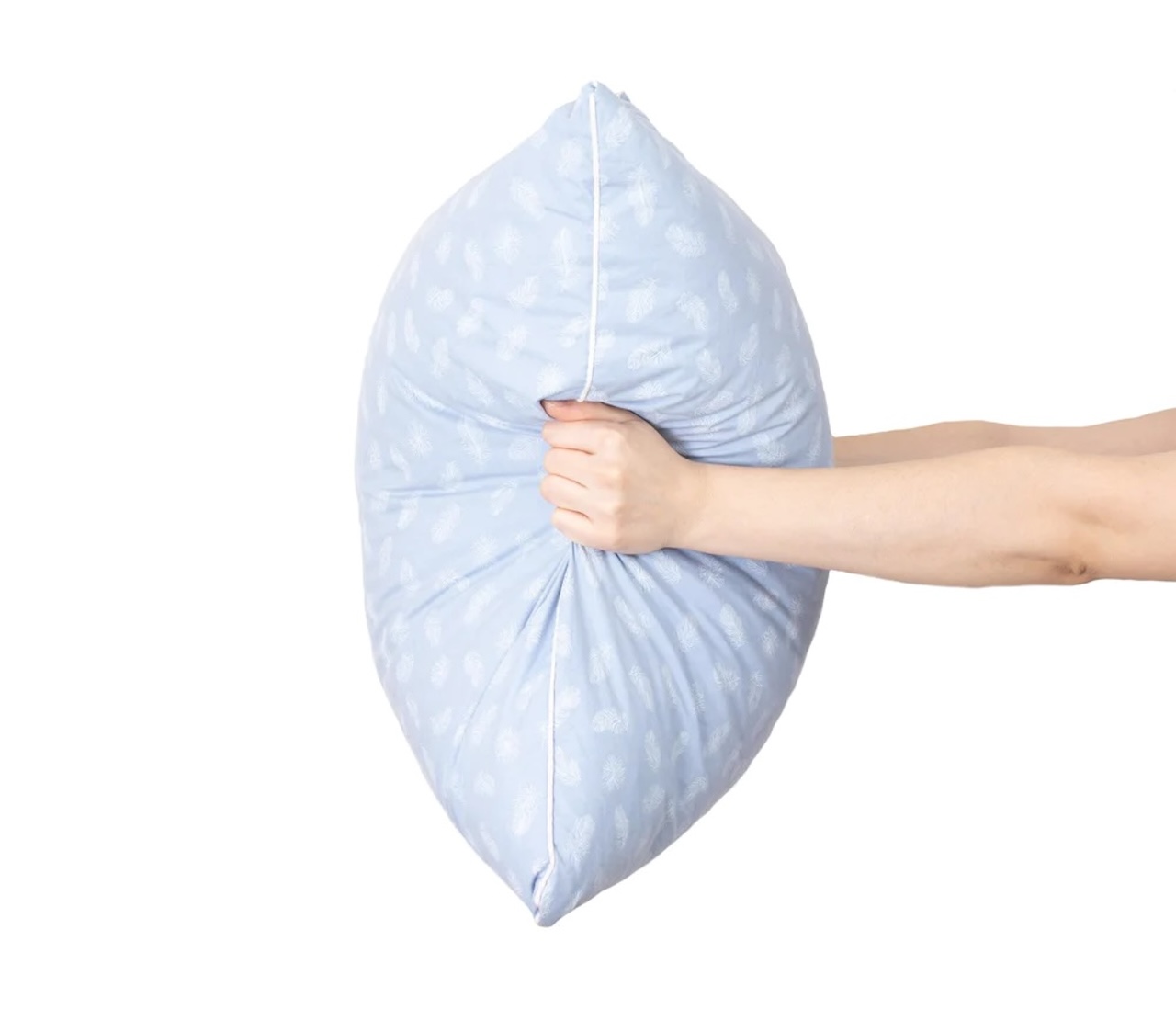
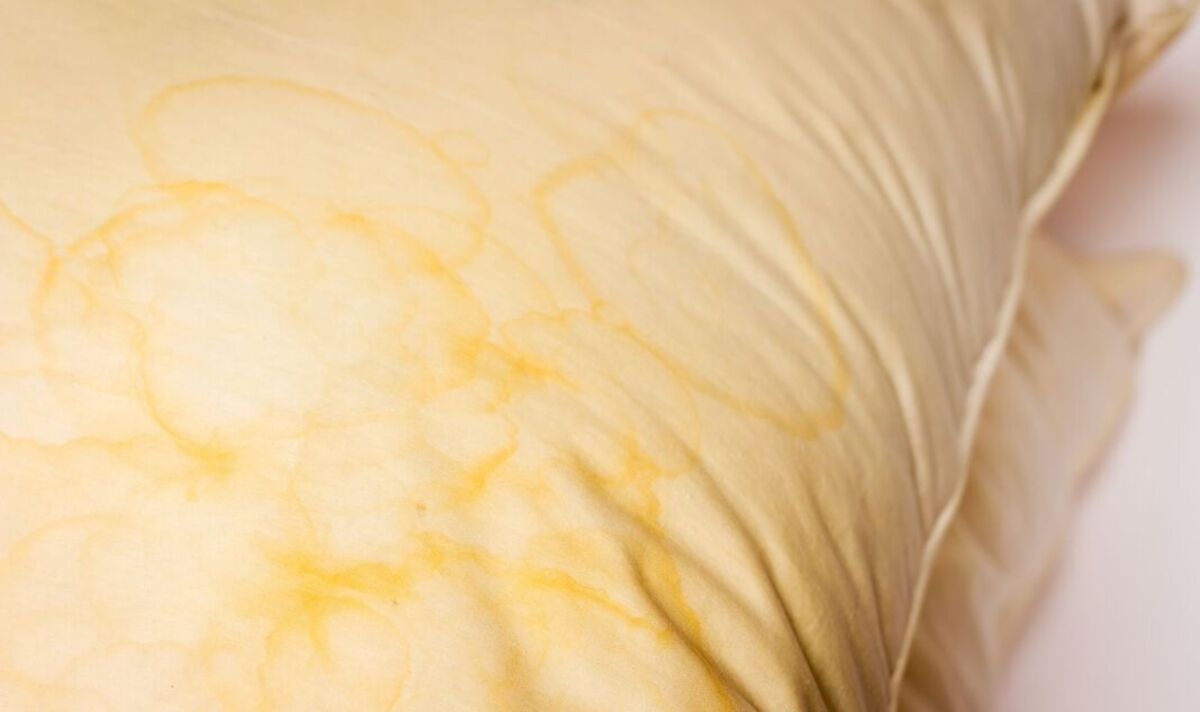
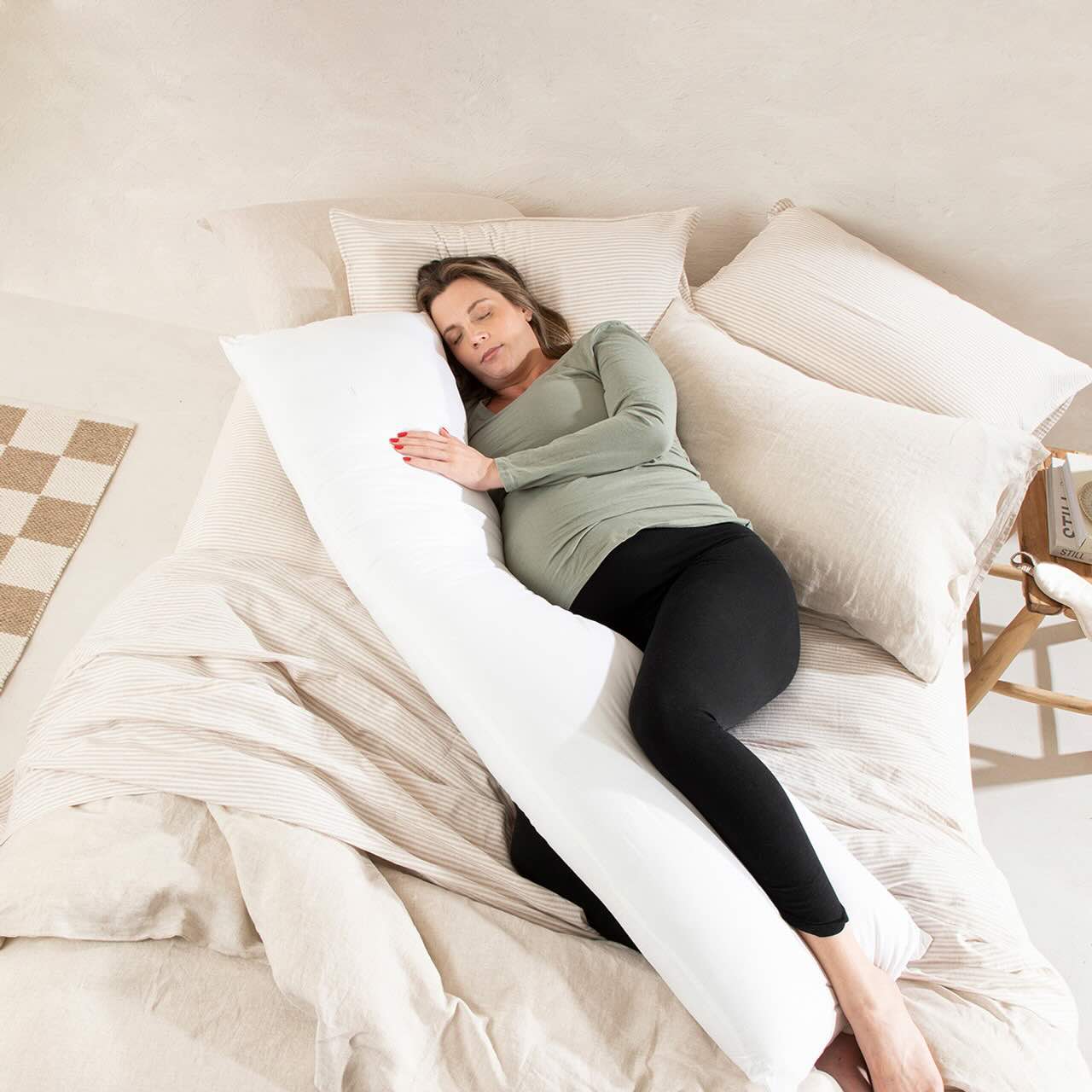
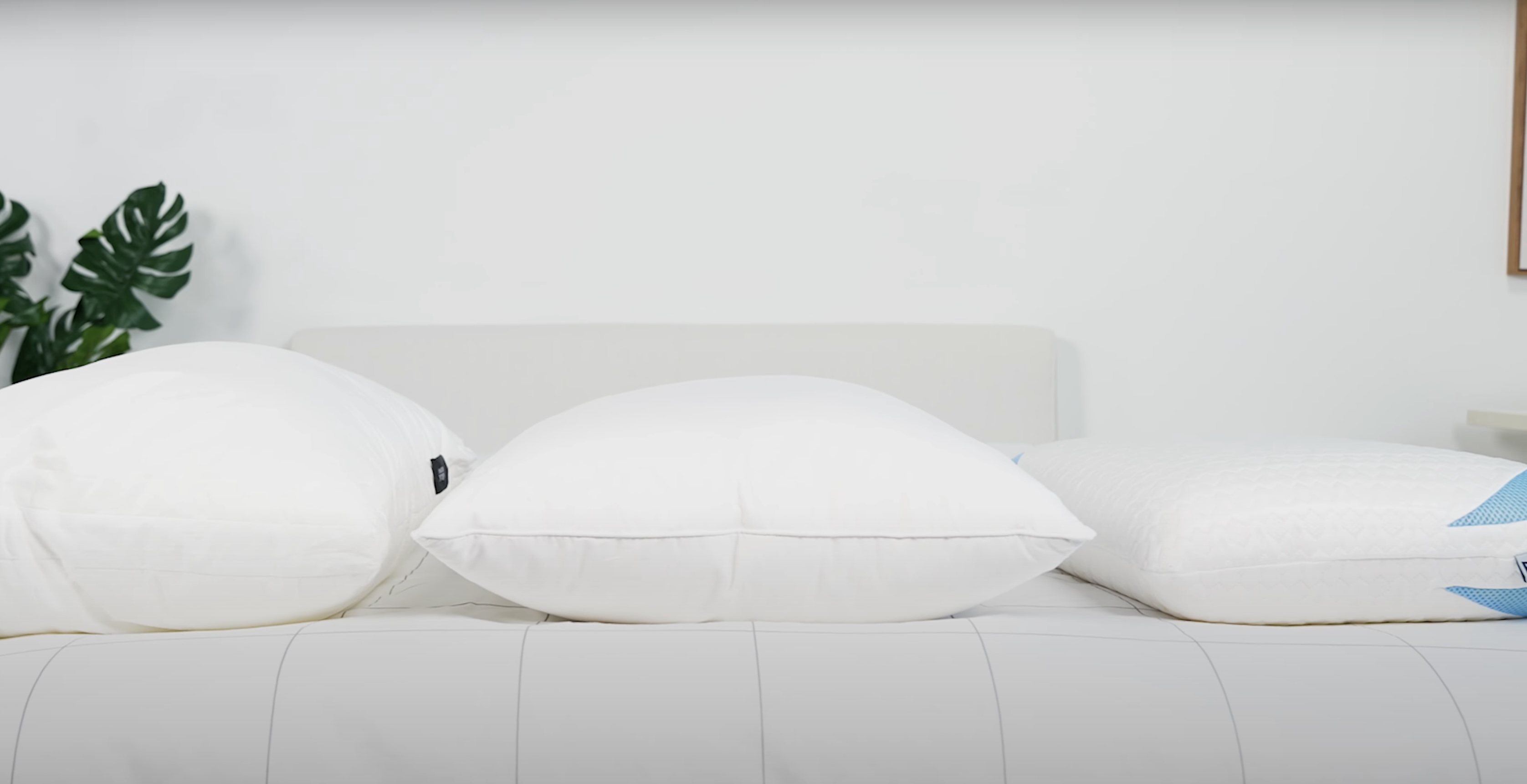


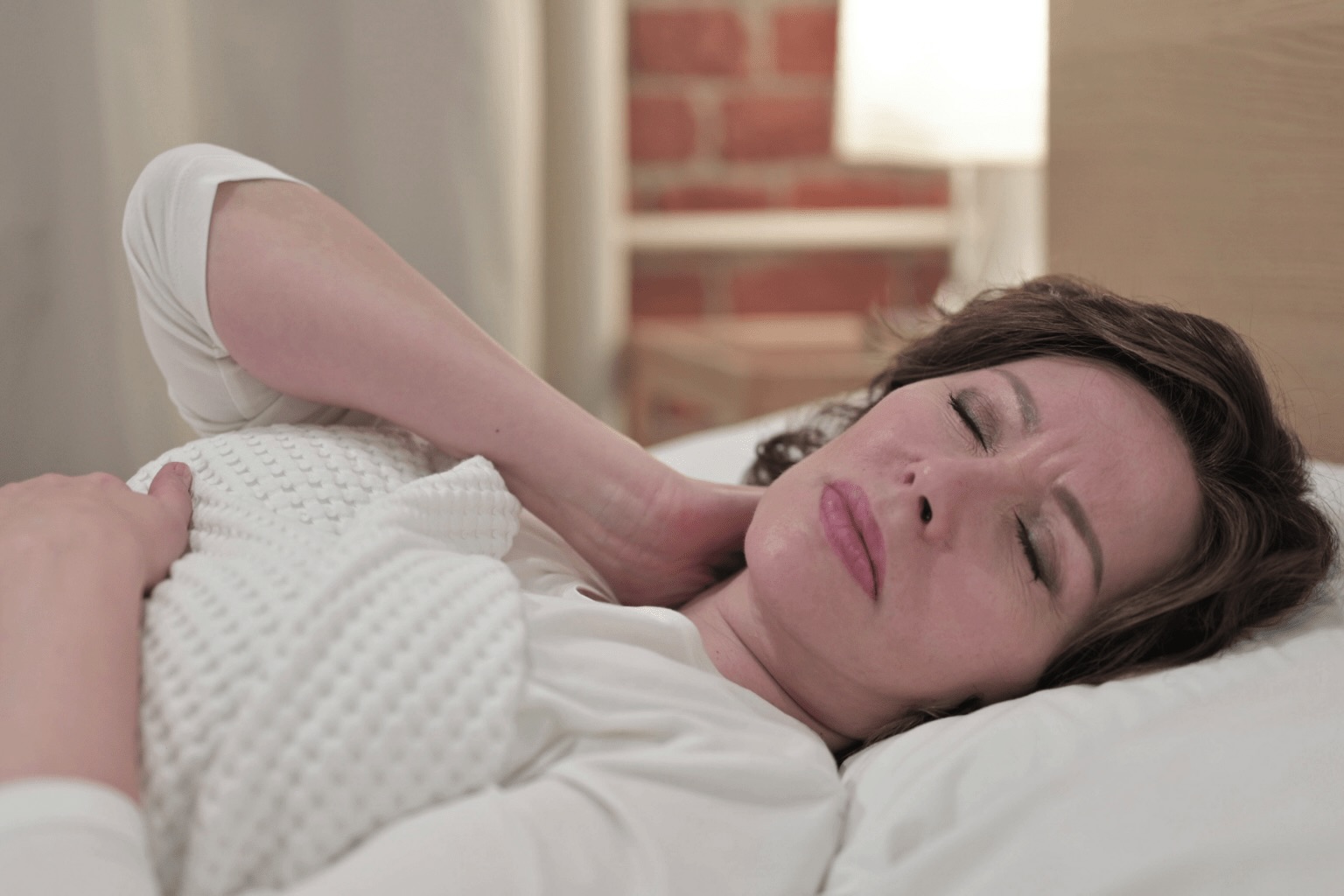



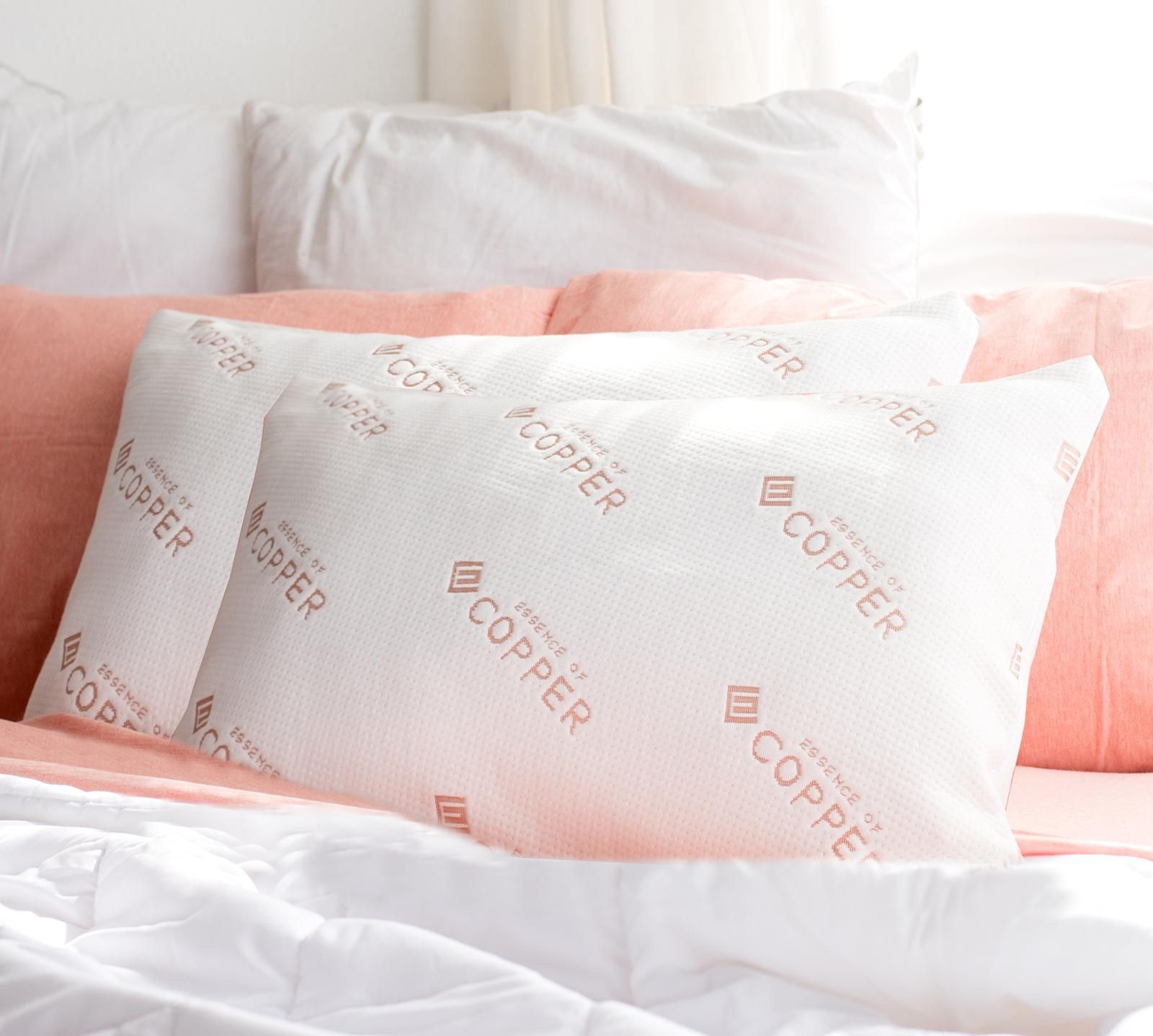

0 thoughts on “Why Do Donut Pillows Help Hemorrhoids”